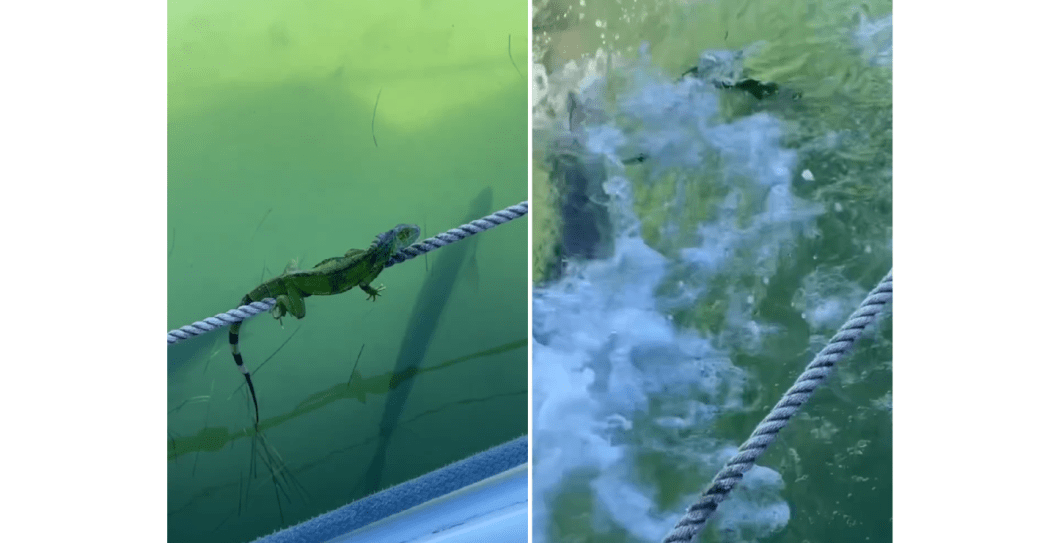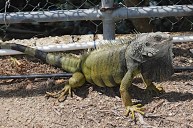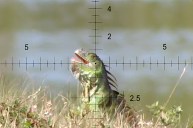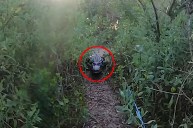Green iguanas, while a fun and interesting-looking reptile, are actually incredibly invasive in the United States. Native to South and Central America, as well as the Caribbean, the reptiles hitched a ride on cargo ships back in the 1960s and quickly took to Florida's warm, humid climate. They've now exploded into an invasive population.
Iguanas have established a breeding population in Florida and have spent years chowing down on native plants and digging massive burrows that damage yards and the foundations of homes. Few Florida predators seem interested in adding them to their diet, so many Floridians have taken matters into their own hands, hunting iguanas themselves.
One Florida species that does seem to enjoy iguana is the tarpon, Florida's premier game fish, renowned for its stamina and fight. A video surfaced on Instagram of a school of tarpon putting that stamina to the test on one unfortunate iguana.
In the video, an iguana is sitting on a rope dangling from the edge of a boat. The captain walks over to the edge to try to remove the big reptile, and it jumps into the water. While the reptiles are accomplished swimmers, this ends up being a huge mistake, as the water below is loaded with tarpon who are all too eager for a quick meal. What follows is several seconds of thrashing water, hungry tarpon, and a frantic iguana.
https://www.instagram.com/p/CkMLqTVg1Op/
The footage was shot by Captain Justin Miller of Reel McCoy charters in Islamorada, Florida. The video cuts off suddenly, but in the video's description, Miller confirms the iguana somehow survived the incredible encounter.
"This iguana swam back to the boat after all of this. I grabbed him it was still alive. He was set free to eat all our native trees, which they are destroying," Miller wrote in the description.
As brutal as it sounds, it's hard for us to feel a lot of sympathy for the iguana, considering what they are doing to Florida. The state has enough problems with invasive species as it is, with Burmese pythons, feral hogs, cane toads, and more destroying native plants and wildlife.
While the tarpon didn't finish the job, it's an encouraging sign that perhaps nature will find a way to balance itself out despite all the problems humans have caused by introducing these invading reptiles in the first place.




